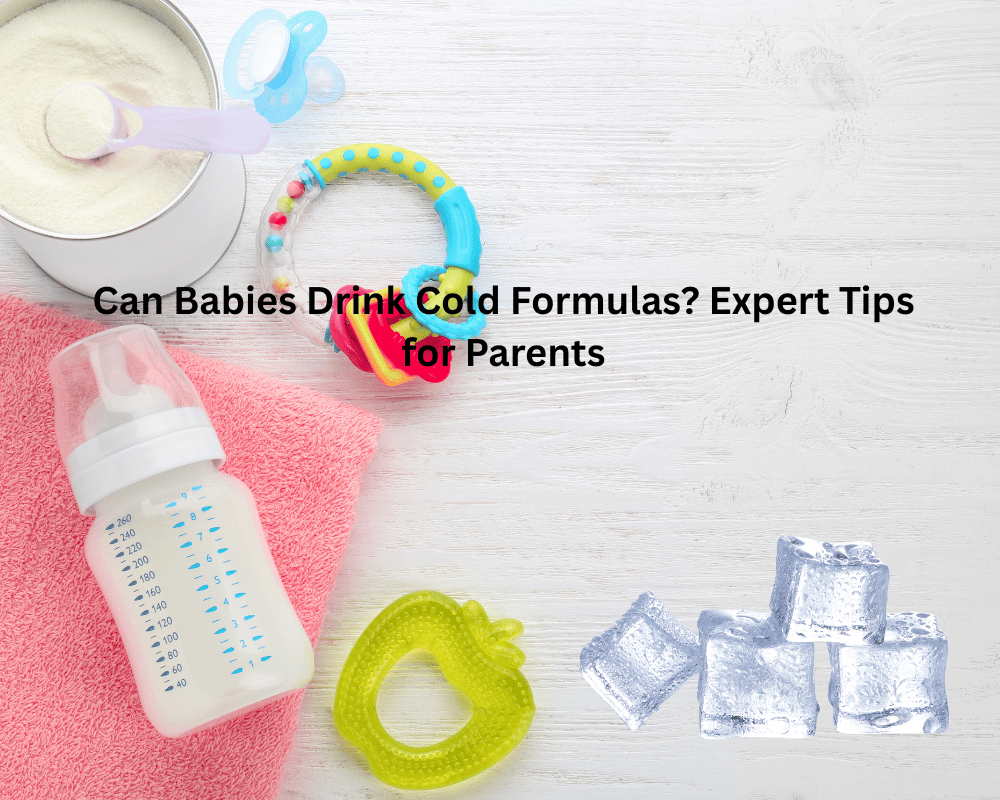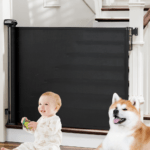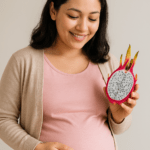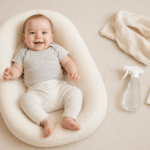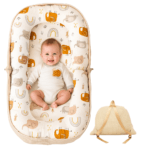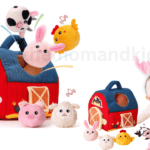Many parents assume that baby formula must be served warm to be safe and comfortable for infants. While warm formula is traditional and often preferred, cold formula has become increasingly popular for its convenience and practicality. But can babies drink cold formula without any health concerns?
The short answer is yes — in most cases, it’s perfectly safe for healthy, full-term babies to consume cold formula. The idea that formulas must be heated is more about preference and tradition rather than necessity. Some parents find that their babies enjoy the cool sensation, especially during teething or hot weather. The key is ensuring that the cold formulas is prepared and stored safely to prevent bacterial growth. This article will walk you through the safety, benefits, drawbacks, and proper preparation of the cold formula so you can make an informed choice for your little one.
Understanding Baby Formula and Its Preparation

Baby formula is a specially designed nutritional substitute for breast milk, made to provide essential vitamins, minerals, proteins, and fats that support an infant’s growth. It can come in powder, liquid concentrate, or ready-to-feed form. Regardless of temperature preference, the preparation steps remain critical. For powdered formula, water must first be safe to drink — often boiled and cooled — before mixing with the formula powder according to package instructions.
For liquid and ready-to-feed formulas, you can pour directly into a sterilized bottle. If serving cold, formula can be prepared ahead of time and refrigerated for up to 24 hours. The preparation process is vital because improper handling can introduce harmful bacteria such as Cronobacter, which can cause serious illness in newborns. Whether warm or cold, hygiene, proper storage, and correct mixing ratios are the real safety factors, not the temperature of the milk.
Is Cold Formulas Safe for Babies?
Yes, cold formulas is generally safe for babies — provided it’s prepared correctly and stored under recommended conditions. According to pediatric guidelines, the main risk with formula is bacterial contamination, not temperature. As long as the water used is clean, the bottle is sterilized, and the formula is stored in the refrigerator at or below 4°C (39°F), your baby can safely drink it cold. Some infants might initially refuse cold milk if they are used to warm bottles, but this is usually a matter of preference rather than health. For preterm infants or babies with certain digestive sensitivities, a pediatrician might suggest avoiding very cold feedings, as their stomachs may respond better to room-temperature formula. In all other cases, serving formula straight from the fridge is safe, quick, and reduces the risk of bacteria multiplying compared to leaving milk at room temperature.
Benefits of Serving Formula Cold

Convenience for Parents
One of the biggest benefits of cold formula is convenience. Preparing bottles ahead of time and storing them in the fridge allows parents to save precious minutes during nighttime feedings or busy mornings. Instead of waiting for water to boil, cool, and then warm up the bottle, you can grab a ready-made cold bottle, shake it, and feed your baby right away. This is especially useful when traveling, running errands, or leaving the baby with a caregiver.
Reduced Risk of Bacterial Growth
Bacteria thrive in warm, moist environments. Warm formula left sitting out for even an hour can become a breeding ground for harmful microorganisms. Cold formula slows down bacterial growth significantly, making it safer when you need to prepare bottles in advance. This is why hospitals and daycare centers often store prepared formula in refrigerators.
Helps During Teething
Cold formula can be soothing for teething babies. The chilled temperature can help numb sore gums, making feeding time more comfortable. Think of it like how an ice pack soothes a sprained ankle — the cold sensation provides relief and distraction from discomfort.
Possible Drawbacks of Cold Formula
Initial Refusal by Some Babies
Babies who are used to warm bottles might initially refuse cold formula. Just like adults have preferences for hot coffee or iced coffee, babies may prefer a certain temperature for their milk. Transitioning from warm to cold bottles may require a gradual approach, starting with slightly cooler formula and slowly working down to fridge temperature.
Potential Stomach Sensitivity
Some parents worry that cold formula could cause stomach cramps or gas. While there is no strong scientific evidence linking cold milk to digestive issues, sensitive infants may react differently. In these cases, trying room-temperature formula instead of cold can be a good compromise. Always monitor your baby’s reaction and consult your pediatrician if you notice ongoing discomfort.
Cold Formula vs. Warm Formula
Nutritional Value Comparison
Temperature does not affect the nutritional value of formula. Whether served warm, room temperature, or cold, the protein, fat, vitamins, and minerals remain the same. What matters most is proper preparation, safe water, and clean bottles.
Taste and Texture Differences
Some babies may detect a slight difference in taste between warm and cold formula, mostly due to temperature rather than actual flavor change. Texture is generally consistent, but cold formula can feel thicker to the mouth. Most infants adjust quickly once they’re accustomed to it.
How to Prepare Cold Baby Formula Safely

Choosing Safe Water Sources
If using powdered formula, start with safe drinking water. In many places, tap water is safe when boiled for at least 1–2 minutes, then cooled before mixing. If you’re unsure about water quality, use bottled water labeled as safe for infants.
Correct Storage Methods
Prepared formula should be stored in the fridge immediately and used within 24 hours. Keep bottles in the coldest part of the refrigerator, not in the door where temperature fluctuates.
Avoiding Contamination Risks
Always wash your hands before preparing formula, sterilize bottles and nipples regularly, and avoid touching inside parts that will contact the milk. This greatly reduces contamination risk regardless of serving temperature.
Tips for Introducing Cold Formula to Your Baby
Gradual Temperature Transition
If your baby has only ever had warm formula, going straight to fridge-cold milk might surprise them. A good method is to lower the temperature gradually over a few days. Start by preparing their bottle as usual, but instead of fully warming it, make it slightly cooler each time. Eventually, move to room temperature, and then finally to cold. This gentle approach helps your baby adjust without rejecting the bottle.
Monitoring Baby’s Reaction
When you switch to cold formula, keep an eye out for changes in feeding behavior. Does your baby drink the same amount? Do they spit up more or seem uncomfortable? While most babies adapt quickly, some may need more time. You can also try giving them a cold bottle during daytime feeds first, when they’re more alert and less fussy, before introducing it at night. This creates a positive association with the change.
Does Cold Formula Cause Gas?
One common myth is that cold formula leads to gas or tummy troubles. Scientifically, there’s no solid evidence that temperature alone affects digestion. Gas is more often related to swallowing air during feeding, the formula’s composition, or underlying sensitivities. However, if you notice consistent gassiness after cold feedings, try burping your baby more often or switching to room temperature to see if there’s an improvement.
Does Cold Formula Disrupt Sleep?
Some believe that cold formula might wake babies up or make it harder for them to settle at night. In reality, many babies drink cold bottles and fall asleep without any issues. Sleep quality depends more on routine, hunger satisfaction, and comfort than on milk temperature. If your baby is warm, cozy, and full, they are likely to sleep well regardless of whether their formula was cold or warm.
Pediatrician Recommendations on Formula Temperature
Most pediatricians agree that healthy, full-term babies can safely drink formula at any temperature — warm, room temperature, or cold. The focus should be on hygiene, safe preparation, and avoiding bacteria growth. For premature infants or those with medical conditions, your doctor might recommend avoiding extreme cold, as these babies may have more sensitive digestion or weaker immune systems. If you’re unsure, a quick conversation with your pediatrician can provide reassurance. Some doctors even encourage cold bottles for teething babies because of the soothing effect. Ultimately, the “right” temperature is the one your baby accepts and that fits your family’s routine, as long as all safety guidelines are followed.
Storing Prepared Cold Formula for Later Use
Prepared formula can be stored in the refrigerator at or below 4°C (39°F) for up to 24 hours. Always place bottles in the coldest part of the fridge, not in the door. Label each bottle with the preparation time to avoid confusion. If a baby drinks from a bottle but doesn’t finish it, the leftover formula should be discarded within one hour due to bacterial contamination from saliva. For traveling, you can use an insulated cooler bag with ice packs to keep bottles cold for up to 4 hours. Having pre-measured powdered formula and water separately is another safe travel option — just mix when ready to serve.
When to Avoid Cold Formula
While cold formula is safe for most babies, there are times when it might not be the best choice. Avoid cold bottles for premature babies, infants under two months with weak immune systems, or those who have been advised by a pediatrician to take warm feeds. If your baby is sick, has an upset stomach, or is experiencing feeding difficulties, warm formula may be more comforting. In colder weather, some babies prefer a warm bottle simply for comfort. Pay attention to your baby’s cues — if they consistently refuse cold milk or seem uncomfortable after drinking it, stick to room temperature or warm bottles instead.
Final Thoughts on Cold Formula for Babies
Cold formula is a safe, convenient, and time-saving option for most healthy babies. It can help busy parents streamline feeding routines, reduce bacterial growth, and even soothe teething discomfort. While some infants may take time to adjust to the change, most will adapt quickly with gradual introduction. The key is proper preparation, safe storage, and paying attention to your baby’s individual needs and preferences. Like many parenting decisions, there is no one-size-fits-all answer — it’s about finding what works best for your family. Whether you serve your baby’s formula warm, room temperature, or cold, the most important thing is that they are fed, nourished, and happy.
Conclusion
Feeding your baby cold formula isn’t just safe — it can be a real game changer for convenience and safety. By following hygiene guidelines, preparing formula correctly, and monitoring your baby’s comfort, you can confidently make cold bottles part of your routine. Remember, the goal is a well-fed, content baby, not sticking to traditions that don’t serve your lifestyle. So if cold formula makes life easier for you and your little one, go for it!
FAQs
1. Can cold formula upset my baby’s stomach?
Not usually. Most babies tolerate cold formula well. If your baby seems fussy or gassy after cold feeds, try a gradual temperature transition.
2. Can I give my baby formula straight from the fridge?
Yes, as long as it was prepared and stored safely. Healthy, full-term babies can drink formula directly from the fridge.
3. How long can cold formula sit out?
Once removed from the fridge, formula should be used within 2 hours. If your baby starts drinking from the bottle, use within 1 hour.
4. Is there a difference in nutrition between warm and cold formula?
No. Temperature does not affect the nutritional content of formula.
5. Can I mix cold formula with breast milk?
Yes, but it’s best to mix immediately before feeding and store according to the shortest storage time of either milk type.
